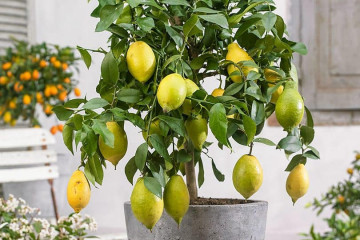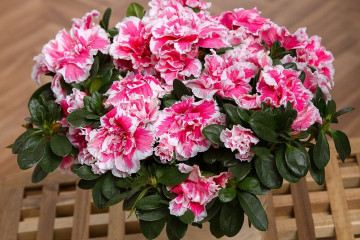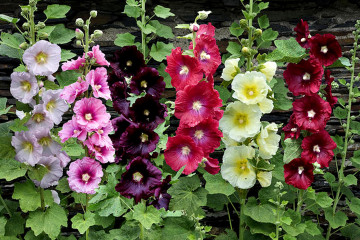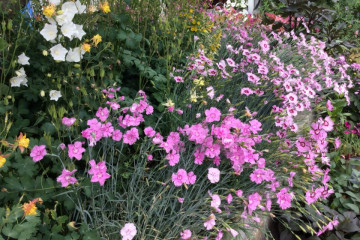Woolly chisel (Stachys byzantina) - planting and caring for the plant
Content:
Two decades ago, an interesting plant was brought to Russia - the straight line. In the form of a free-standing bush, it does not make an impression, is not remembered. But skillfully planted in groups on flower beds, alpine hills, this culture makes an indelible impression, it makes the grower want to immediately plant a purse in his garden.
What kind of plant is this - woolly chisel

Woolly chisel
Byzantine purse (Stachys byzantina), or "sheep's ears" - these names refer to the same plant. China is considered his homeland. In the wild, the plant is found in Iran, Armenia, Turkey. In Russia, it grows in the southern subtropical zones - in the Caucasus, the Black Sea coast. It also grows in Ukraine.
The varietal species have taken root and delight the inhabitants of central Russia, Western Siberia, in the harsh climate of the northern latitudes, but subject to the provision of winter shelter. The description of the plant gives a complete picture of the value of the flower.
Features and characteristics
In nature, there are more than 400 species of chisel. The plant belongs to the genus Stachys, which is a member of the Lamiaceae or Labiate family. It is a perennial herbaceous shrub. The decorative qualities of the garden culture are given by silvery tomentose-pubescent leaves. For the incredible softness and oblong shape of the leaf plate, the woolly chisel is called "sheep's ears".
Basal leaves are spatulate or linear. Above on a straight stem - oval. In the middle of summer, inflorescences are formed in the form of a dense dense false spike from a large number of multi-flowered whorls.

Silver Carpet Variety
Popular varieties
A variety of varieties is a distinctive feature of the "overseas" guest. Several popular types stand out on the flower beds of Russian florists:
- Silver Carpet. The leaves are tightly pressed against each other, the stems creep along the ground, there are few peduncles, and the decorative properties are high. Small bushes look beautiful, lined up along the paths.
- Striped Phantom. Perennial 35-40 cm high, in a group planting forms a single decorative cover. Leaves are fleshy, elliptical in shape. The color of the plate is green with cream stripes. Throws out an ear - thick at the top, thinned at the base.
- Sheila Macqueen. Non-flowering ground cover variety. Compact bushes up to 15 cm tall act as a beautiful backdrop for other flowers.
- Big Ears. The shoots stretch 25 cm in height, the color of the soft leaves is muted green.
- Helene Von Stein. Frost-resistant plant (you need to cover it in the first year after planting) up to 65 cm high. Grows in sunny areas, but tolerates partial shade well. A dense ear consists of lilac flowers.
- Cleaner Monier. Medium-sized perennial shrub 45-60 cm high with green leaves. The stem is straight or slightly curved, the flowers are purple-pink. Blooms in June-July. Usage - borders, flower beds.
- One-year field scrub. Differs in branched rough leaves. It grows up to 15 cm. The lower leaves are cordate, the upper ones are ovoid. The flowers on the corolla are at first single, to the apex - trifoliate pink. Prefers sandy soils.
- Stachys officinali officinalis.Unusual appearance in height - it reaches 100 cm. Stems are tetrahedral, there are few leaves, but they are long - 10-12 cm. The plates are covered with coarse hairs, grow in pairs on long petioles at the root, and on short ones higher on an erect stem. The variety is not used in traditional medicine, since there are very few raw materials.
- Stáchys sylvática (sylvatica). It is used as a styptic for cuts and ulcers on the skin. Infusions are used to calm the nervous system, normalize blood pressure. The bush is high (up to 1 m) with bright crimson flowers in the axils of the leaves.
In Russia, the chastetz is called "hare ears." Gardeners enthusiastically set about planting this plant.
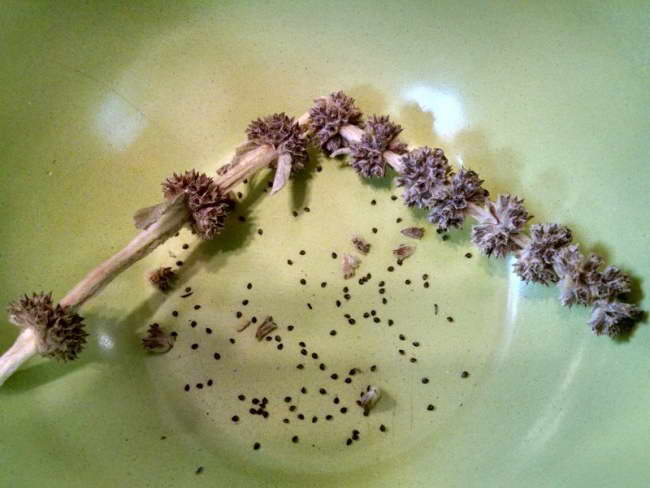
Crop seeds
How culture reproduces
At home, the stachis is propagated by seeds and vegetatively.
Growing from seeds
Seed material can be purchased or prepared by yourself. Before planting, it is immersed in water to separate healthy seeds from empty and rotten ones. Selected specimens are etched for 2 hours in a light manganese solution.
The container for disembarkation is selected from wood or plastic. It is disinfected with boiling water, filled with soil, pouring drainage (expanded clay, pebbles) onto the bottom. The soil is suitable for universal seedlings. You can prepare it from sod land, humus and sand - the plant is not demanding on the soil.
The seeds must be sown to a depth of 1-2 cm. Then the ground is sprayed, covered with a film to create a greenhouse effect, and the containers are placed in a warm place. If you sow them by the end of February, then in March (in the third week) shoots will appear.
Next, you need to take care of the seedlings. The film is slightly opened, the landing is aired. When 2-3 true leaves appear, the seedlings are dived, transplanted into separate containers. Quenching begins gradually. The first leaves of the seedlings are not fluffy, do not be afraid of this.
In May, plants are transferred to open ground, provided that there can no longer be recurrent frosts in the area. An earthen lump with delicate roots cannot be broken.
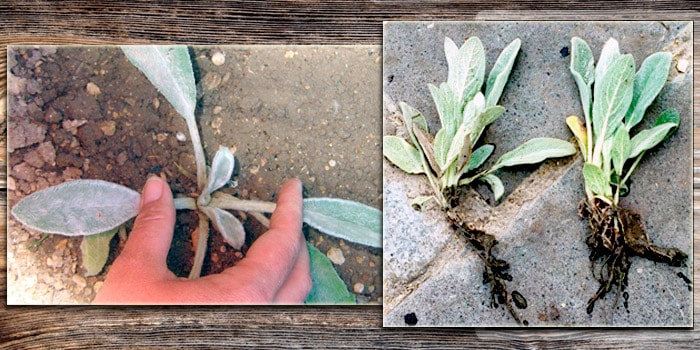
Dividing a bush is one of the ways to reproduce a culture
Vegetative methods
Each part of the plant can be used for reproduction:
- Cuttings. A fragment with 3-4 leaves is taken from a healthy stem in the summer. Rooted in water or nutrient substrate. When strong roots appear, they are transferred to a permanent place.
- Division of the bush. Perennial varieties require updating. To do this, immediately after the frost, the rhizome is dug up, divided into parts with a knife, and planted in the planned areas. The distance between the plantings is 20 cm. It is better to plant it denser so that there are no bald spots on the flower bed.
- Seed tubers. In early spring or autumn, the plant is dug up, divided into tubers. If they are to be transplanted immediately, they are soaked in "Kornevin" and then only planted.
All methods work, the florist only needs to choose the right one. Tubers are also bought in retail chains. So Finch and Ambigua stachis are sold in sets of 30 tubers.
Care in the garden
Grass purse is on the account of florists as a capricious plant. Meanwhile, compliance with agricultural technology will not be difficult even for a beginner.
What conditions do the plant like
The main thing is the absence of drafts in areas with partial shade. The intensely scorching sun leaves burns on the leaves. Moisture is also undesirable for them - it is better to water the crop at the root.
In nature, culture develops on rocky and sandy soils, where there is no stagnant water.
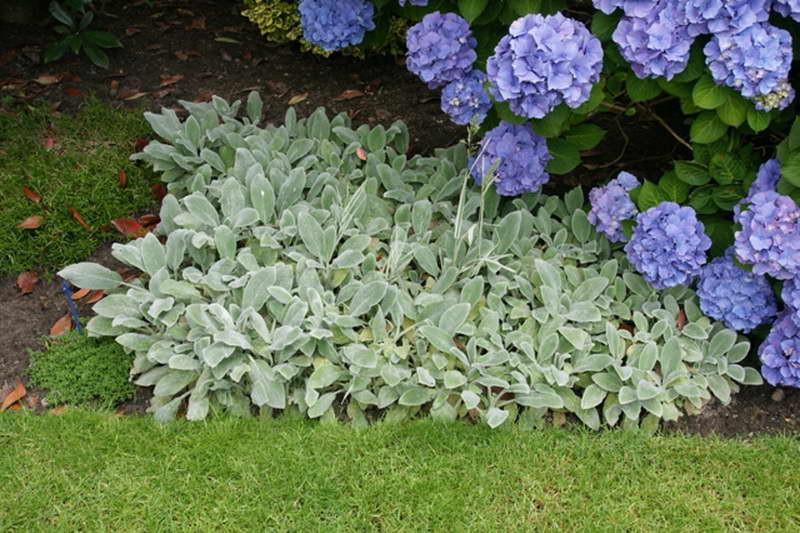
In the garden, the cleaner should be placed in the shade
Garden work
Florists do not neglect the following care rules:
- Watering. Irrigate the culture only when the soil dries out, once every 10 days. The water should be separated, warmed up in the sun - from cold, the plants get stress from the well.
- Mulching. In the spring, after harvesting the front garden, the soil is mulched with sawdust - this will preserve natural moisture.
- Loosening. After watering, the soil is weeded with care so as not to damage the roots, to give them access to air. Loosening depth - no more than 5 cm.
- Top dressing. The whole season (once every 2 months) mineral fertilizers are used. Organic matter (chicken droppings, mullein) should ferment well, it is required for the cleanser in the spring. Compositions for dressing are chosen universal, intended for ornamental crops.
- Transfer. Rhizomes are dug up, divided into parts and transplanted every 5 years. This is a procedure for reproduction and rejuvenation at the same time. Some varieties require it every 2-3 years.
- Wintering. Before frosts, the tops are cut off, although the plant is evergreen. By winter, it loses its attractiveness, and in the spring it will spoil the look of the flower bed. Cover with straw, sawdust, spruce branches. In the spring, plantings are rapidly growing.
Unobtrusive attention from the florist will soon give a result - a silvery fluffy "carpet" will spread on the flower beds and near the garden paths.
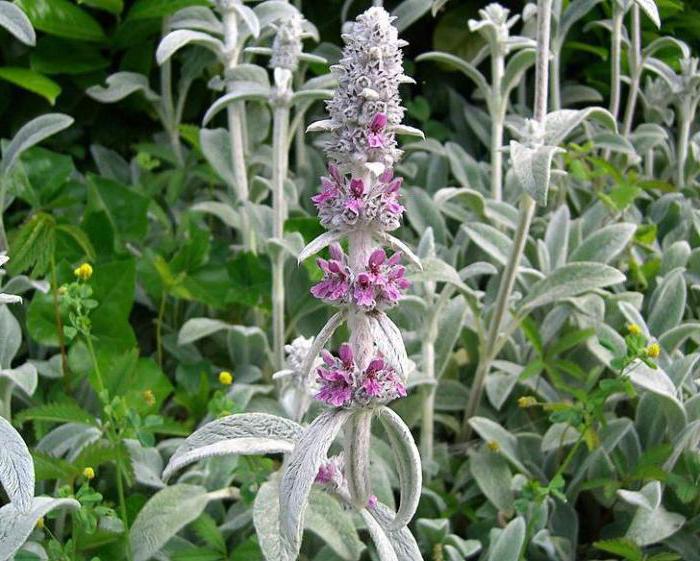
Bloom
Bloom
The beauty of a plant is in its leaves. Whorled flowers are not decorative. They are sparsely scattered over the ear, which botanists call "false." Color - pink with shades of purple, lilac, pale blue.
After flowering, nuts ripen. They are hard and rather large, more often smooth, black in color. During this period (or earlier, if seed is not needed), the faded part is cut off, thereby improving the appearance of the planting.
Possible growing problems
The plant has natural immunity against viral diseases common for flower gardens. Insects bypass it too. Bees collect nectar from non-lush flowers without harming the bees.
The only thing that harms plantings is excess moisture. If the soil is poorly drained, or if the plant is watered too abundantly, mildew can develop. It is necessary to let the "sheep's ears" dry out, and everything will be restored. But the damp bushes are removed.

Chistets beautifully sets off other crops in the flowerbed
Use in landscape design
Low-growing evergreen shrubs are widely used in landscape design. Florists easily make garden compositions, where the background is the straight line (Stachys recta) or ground cover. The velor soft structure of the leaves helps to create unique landscapes on horizontal rockeries and alpine slides.
Large-flowered chisel "Superba" is successfully combined with a cross and yakolka, emphasizes the sophistication of lavender, ageratum. Against the background of "sheep's ears", marigolds, veronica and Carpathian bells are perceived in a new way.
Compositions with Byzantine chastetz and deciduous ornamental crops: hosts, milkweed, geychera look non-standard. Borders are framed with Stachys lanata.
The plant is used in winter bouquets to highlight the beauty of roses and gerberas. In the vase, the cleaner dries up last.
The Byzantine chisel (stachys byzantina) was recently introduced to Russia. But without it it is already difficult to imagine parks, gardens, summer cottages. The plant has hundreds of varieties, some native to the wild in the south of the country, such as Helen Von Stein. The culture conquered the decorativeness of the leaves - fluffy long plates have a silvery color. The flowers are small, inconspicuous, so they are cut off without waiting for the seeds to ripen.
They propagate the purse in the usual ways for flowers: seeds, cuttings, dividing the bush.Care consists in creating comfortable conditions: rare watering at the root, fertilizers, pruning before wintering.
